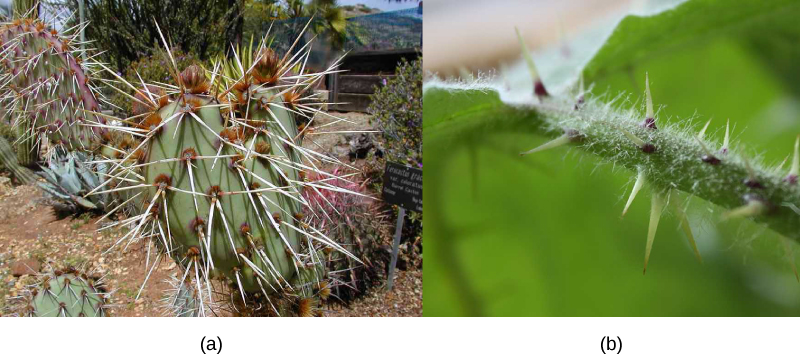| << Chapter < Page | Chapter >> Page > |
Without seed plants, life as we know it would not be possible. Plants play a key role in the maintenance of terrestrial ecosystems through stabilization of soils, cycling of carbon, and climate moderation. Large tropical forests release oxygen and act as carbon dioxide sinks. Seed plants provide shelter to many life forms, as well as food for herbivores, thereby indirectly feeding carnivores. Plant secondary metabolites are used for medicinal purposes and industrial production.
Coevolution of flowering plants and insects is a hypothesis that has received much attention and support, especially because both angiosperms and insects diversified at about the same time in the middle Mesozoic. Many authors have attributed the diversity of plants and insects to pollination and herbivory , or consumption of plants by insects and other animals. This is believed to have been as much a driving force as pollination. Coevolution of herbivores and plant defenses is observed in nature. Unlike animals, most plants cannot outrun predators or use mimicry to hide from hungry animals. A sort of arms race exists between plants and herbivores. To “combat” herbivores, some plant seeds—such as acorn and unripened persimmon—are high in alkaloids and therefore unsavory to some animals. Other plants are protected by bark, although some animals developed specialized mouth pieces to tear and chew vegetal material. Spines and thorns ( [link] ) deter most animals, except for mammals with thick fur, and some birds have specialized beaks to get past such defenses.

Herbivory has been used by seed plants for their own benefit in a display of mutualistic relationships. The dispersal of fruit by animals is the most striking example. The plant offers to the herbivore a nutritious source of food in return for spreading the plant’s genetic material to a wider area.
An extreme example of collaboration between an animal and a plant is the case of acacia trees and ants. The trees support the insects with shelter and food. In return, ants discourage herbivores, both invertebrates and vertebrates, by stinging and attacking leaf-eating insects.
Grasses are a successful group of flowering plants that are wind pollinated. They produce large amounts of powdery pollen carried over large distances by the wind. The flowers are small and wisp-like. Large trees such as oaks, maples, and birches are also wind pollinated.
Explore this website for additional information on pollinators.
More than 80 percent of angiosperms depend on animals for pollination : the transfer of pollen from the anther to the stigma. Consequently, plants have developed many adaptations to attract pollinators. The specificity of specialized plant structures that target animals can be very surprising. It is possible, for example, to determine the type of pollinator favored by a plant just from the flower’s characteristics. Many bird or insect-pollinated flowers secrete nectar , which is a sugary liquid. They also produce both fertile pollen, for reproduction, and sterile pollen rich in nutrients for birds and insects. Butterflies and bees can detect ultraviolet light. Flowers that attract these pollinators usually display a pattern of low ultraviolet reflectance that helps them quickly locate the flower's center and collect nectar while being dusted with pollen ( [link] ). Large, red flowers with little smell and a long funnel shape are preferred by hummingbirds, who have good color perception, a poor sense of smell, and need a strong perch. White flowers opened at night attract moths. Other animals—such as bats, lemurs, and lizards—can also act as pollinating agents. Any disruption to these interactions, such as the disappearance of bees as a consequence of colony collapse disorders, can lead to disaster for agricultural industries that depend heavily on pollinated crops.

Notification Switch
Would you like to follow the 'Biology' conversation and receive update notifications?